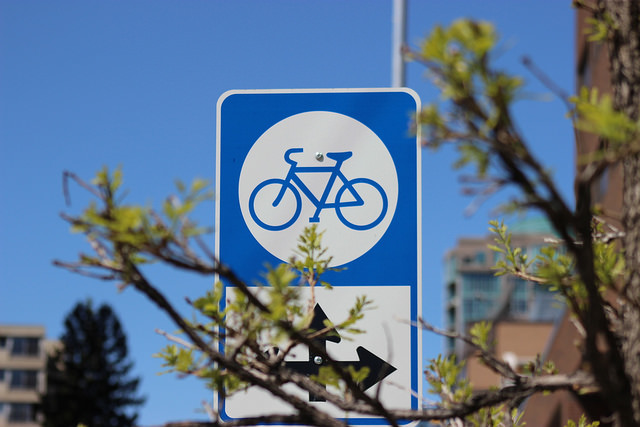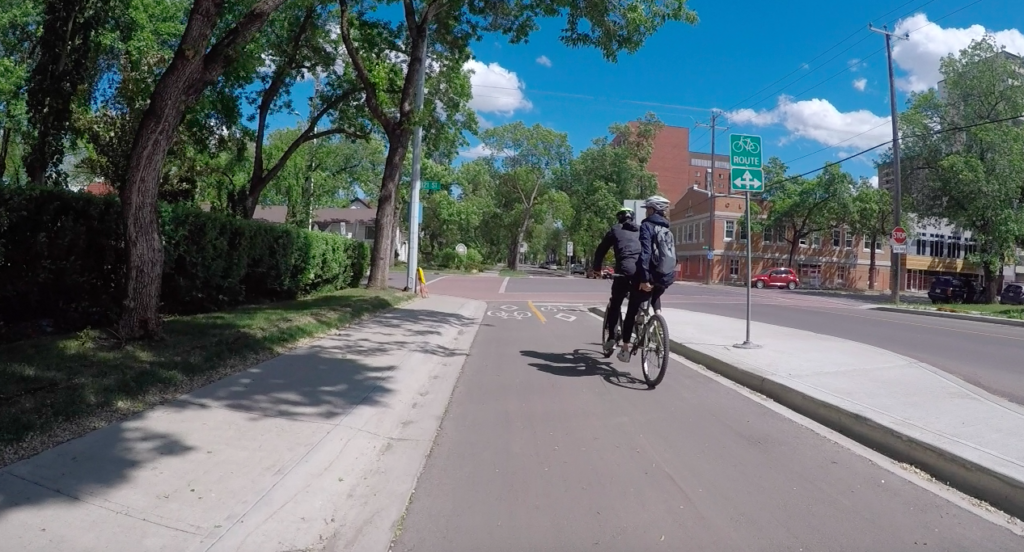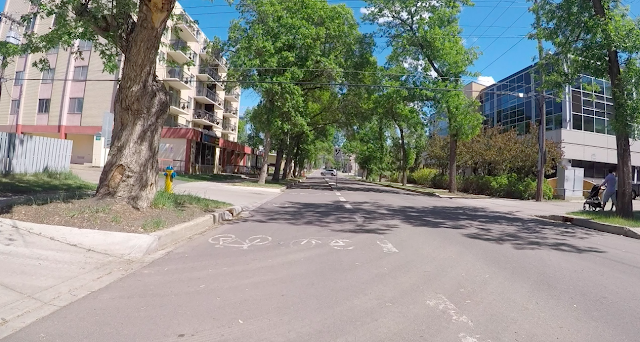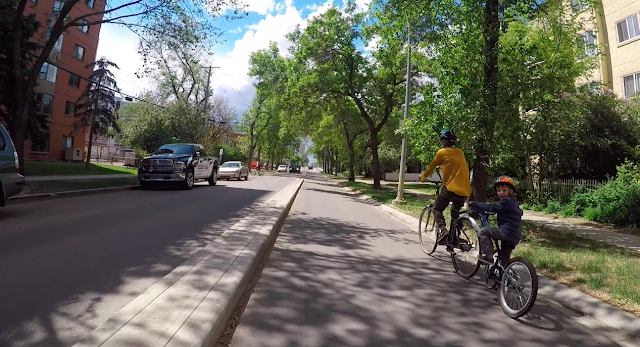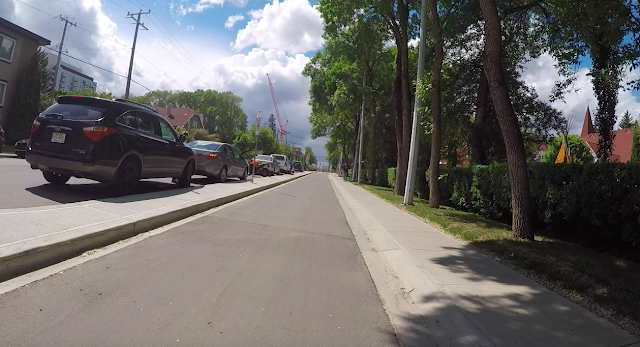Monday was a big day for Calgary. After an 18-month pilot project testing out a downtown network of separated bike lanes, city council voted to make the project permanent. It was a squeaker of a majority vote that approved the pilot project in the first place, so its permanence was never assured.
In the end, more city councillors voted in favour of keeping the network than approved the pilot project in the first place, which means several changed their votes in favour after seeing the bike lanes in action. “I was a person that didn’t support this in the beginning. I thought this was madness,” Coun. Diane Colley-Urquhart told reporters after the vote. “But, to see how it’s evolved, and how it’s working and to see how people are starting to get the fact that this is shared public space.”
I argued in favour cycle tracks in places like this, this and this, so I’m certainly pleased with the result in my home town. The process also taught us much that may be applied to other cities.
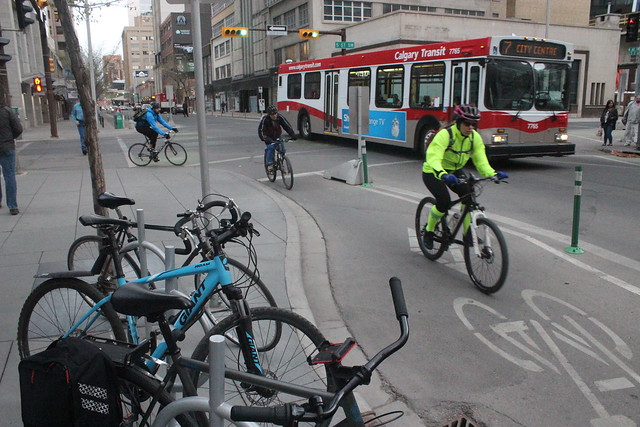
Boldness paid off
In a city known for suburban sprawl, a love of the automobile, and public works timidity (the city is still debating whether extra money should be spent to bury a commuter train line, even though its at-grade predecessor is regularly plagued by bad weather, tangled traffic, errant motorists who crash into it and, all-too often, pedestrians getting run over) installing an entire network of separated bike lanes all at once was a bold step. It could have easily backfired — opponents cited the costs, the disruption on downtown traffic, and the displacement of parking spaces, among other things, as reasons to hate the idea.
In the end, it seems that installing the entire network all at once worked because it offered up the big picture. It might have been easier politically to build the network one lane at a time, as most cities do, but the uptake on a lane with few connections would have been slow. In this case, dropping down a well-thought out network gave cyclists and would-be cyclists a broader peek at what a cycle-track network can do, and, more importantly, have them somewhere to go.
The network didn’t succeed because of its boldness. It succeeded because it was practical. But in the politically charged climate around cycling, boldness was needed to ensure it was functional.
Tweaking
It wasn’t smooth sailing for the entire network, and perhaps it never will be. One things that seemed to placate opponents on city council was assurances that the network will continue to be tweaked to fix problems that arise.
Such tweaking was one of the city’s best practices since the bike lanes were installed. During the 18 months of the pilot, city planners reconfigured conflict zones, rejigged transition points, and adjusted intersections. This was crucial to the network’s success, and to public support. If people feel that problems will be fixed, it tends to dial down the opposition.
Part of Monday’s decision was a re-investment in the network to focus on areas that still aren’t perfect. And, let’s face it, there are many of them. In fact, one of the more troubling aspects of the pilot project was the fact that the number of bike collisions on these routes actually increased, which was contrary to the experience of separated bike lanes pretty much everywhere else. It turns out that most of those collisions were minor, occurred early in the pilot project, and were mitigated (mostly) with some design tweaks.
That’s why tweaking is important. Let’s hope that attitude of constant improvement carries into the future.

Data
The debate, both before and after the pilot project was installed, focused largely on numbers. Were there enough cyclists in the city to justify the expenditure? It’s a fair question, but before the installation, it was a chicken-and-egg scenario: how were we to know how many people would ride a bike before they were given a chance to ride?
As a result of that debate, the network became almost certainly the most scrutinized 6.5 km stretch of asphalt in the city’s history. There were more than 80 measures that were taken to judge the pilot project’s success, part of which was the installation of an array of automatic counters that post daily results to a public website.
This data was key to the debate throughout the project, probably because there was such uncertainty about it to begin with. Having solid, reliable data is key when such uncertainty exists.
Beware the data
Data is great, sure, but if the debate around Calgary’s bike-lane network proved anything, it’s that even data can be politicized.
Despite the 82 measures that were taken to gauge the success of the project, critics still found ways to poke holes in it. They said the wrong measures were taken, the data was manipulated, and the numbers were unreliable. For as much as good data is key, there’s also a risk of being over-reliant on numbers.
Safe cycling, or at least the perception of safe cycling, isn’t a completely data-driven exercise. Example: Cycling is, according to some studies, just as safe as walking or driving a car, but the perception among many would-be cyclists is that it’s dangerous. Part of what makes separated bike lanes work is that they are safe, sure, but also that they build the perception of safety. I’ve often said that riding in a safe bike lane is something you feel in your gut more than your head. They just feel better to ride on.
It’s difficult to quantify these social or psychological aspects in numbers, and they risk being lost if the emphasis is too much on cold, hard data.
We ain’t done
Calgary’s cycling community spent much of the evening after the city council decision backslapping, and there is nothing wrong with celebrating. But let’s also avoid getting smug about this political victory. This is the first step in making Calgary a truly bike-friendly city, and much work remains. Despite the success of the pilot project, and the increases in the number of people riding, those numbers remain small. If this pilot project proved anything, it’s that there’s only slightly more than potential in Calgary right now. To turn that potential into people on bikes will take work: improving connections, solidifying the network, educating everyone in the city and improving safety. Let’s get on with it.
